Some cool art supply images:
Beads
Image by origami_potato
Robert's overload of art supplies.
FOUR!!!
Image by origami_potato
Robert's overload of art supplies.
Chirp chirp.. *glup*
Image by origami_potato
Robert's overload of art supplies.
Some cool art supply images:
Beads
Image by origami_potato
Robert's overload of art supplies.
FOUR!!!
Image by origami_potato
Robert's overload of art supplies.
Chirp chirp.. *glup*
Image by origami_potato
Robert's overload of art supplies.
A few nice western art images I found:
a-055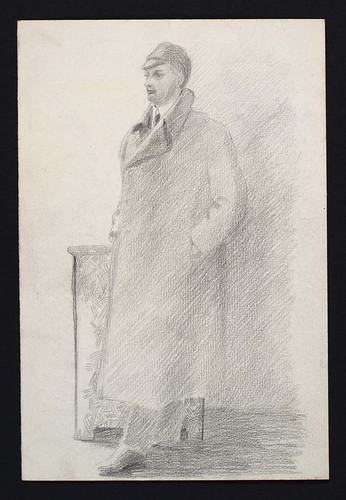
Image by dddunlop
From the sketchbook of Annie Collie, circa 1910-1925. Produced in Winnipeg, Manitoba, Canada.
a-050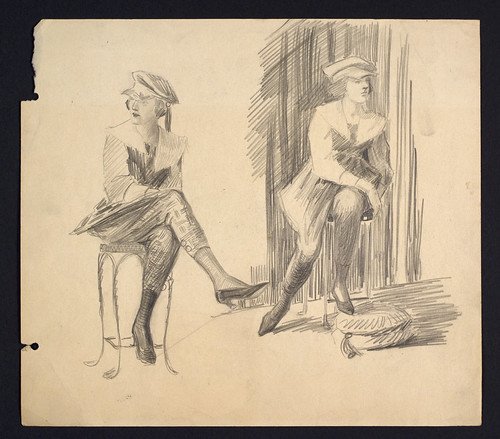
Image by dddunlop
From the sketchbook of Annie Collie, circa 1910-1925. Produced in Winnipeg, Manitoba, Canada.
a-052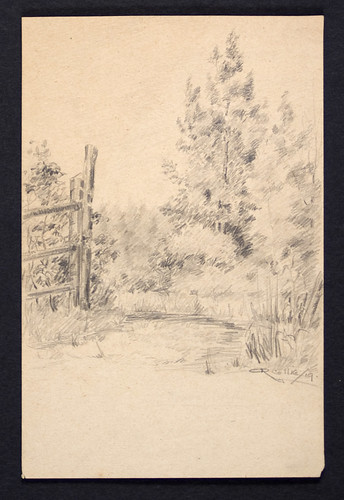
Image by dddunlop
From the sketchbook of Annie Collie, circa 1910-1925. Produced in Winnipeg, Manitoba, Canada.
A few nice art institute images I found:
Art Institute of Portland Block Party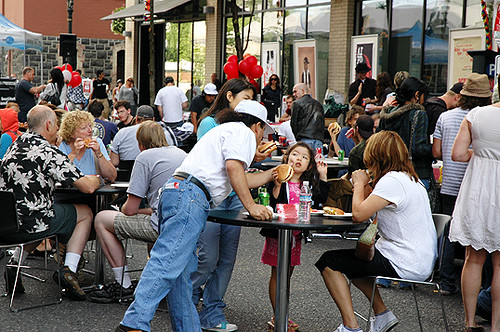
Image by Art Institute of Portland
The Art Institute of Portland celebrates it's 10 year anniversary with a "Rock the Block" block party - food, djs, live artwork, live bands, and a My Pretty Portland film contest.
Find out more about The Art Institute of Portland: www.artinstitutes.edu/portland
Photo: Lulu Hoeller
Some cool clip art pictures images:
National Archaeological Museum of Naples - Salone della Meridiana - HD video clip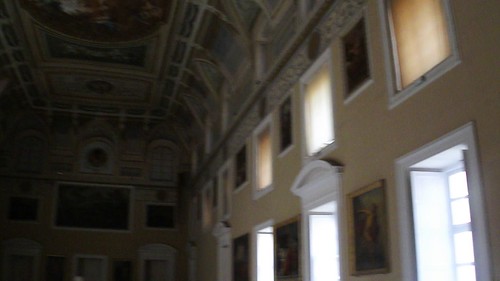
Image by ell brown
This is the National Archeological Museum of Naples.
It was our first stop of the day in Naples.
The Naples National Archaeological Museum (Museo Archeologico Nazionale di Napoli) is a museum in Naples, southern Italy, at the northwest corner of the original Greek wall of the city of Neapolis. The museum contains a large collection of Roman artifacts from Pompeii, Stabiae and Herculaneum. The collection includes works of the highest quality produced in Greek, Roman and Renaissance times. It is the most important Italian archaeological museum.
Charles III of Spain founded the museum in the 1750s. The building he used for it had been erected as a cavalry barracks and during its time as the seat of the University of Naples (from 1616 to 1777) was extended, in the late 18th century.
Museo Archeologico Nazionale di Napoli
First floor in the museum and you come across this big art gallery room.
Didn't have time to have a proper look at the pictures, as had to go into the side rooms.
The room is the Salone della Meridiana.
Magnificent ceiling in here.
Check out the amazing ceiling above.
HD video clip of the gallery.
Postcard -- Then and Now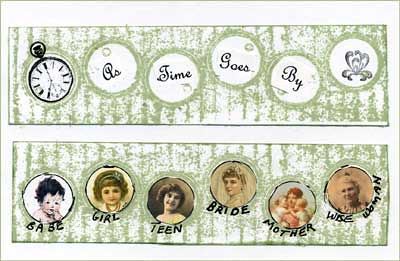
Image by campbelj45ca
Hand made postcard combines stamping with clip art. Pictures show baby, child, teen, bride, mother and wise woman. Text reads As Time Goes By.
What the hell is that?
Image by Alain-Christian
My guess? It's fucking Gonzo from Sesame Street warning us of the dangers of pouring liquid down a drain.
Out of all the clip art in the world, THIS is what they go with? Whomever makes the signs in this hospital is fucking looney toons!
How hard was it to find a picture of a drink bottle and make a red circle line thing going through it like the Ghost Busters logo?
Check out these clip art images images:
Cartier London Art Deco Diamond Fruit Salad Clip image Clive Kandel Cartier Collection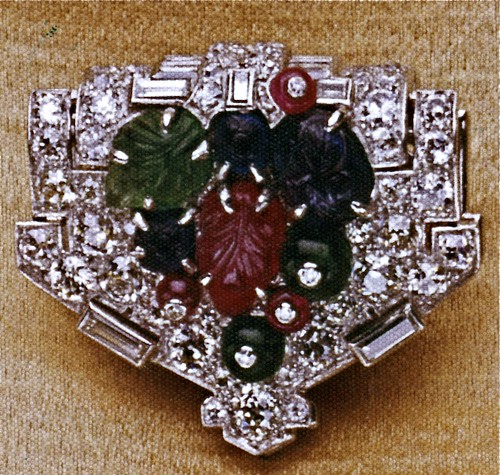
Image by Clive Kandel
Reproduction of this image is strictly prohibited.
info@newyorkjewelrydiary.com
Cartier London Art Deco Diamond Fruit Salad Clip image Clive Kandel Cartier Collection
Clive Kandel Jewelry Collection
www.newyorkjewelrydiary.com
www.youtube.com/user/CliveKandel?feature=mhee
Clive Kandel Jewelry History Collection
Clive Kandel Cartier Collection
Cute Children Giving Valentine Greetings - vintage clip art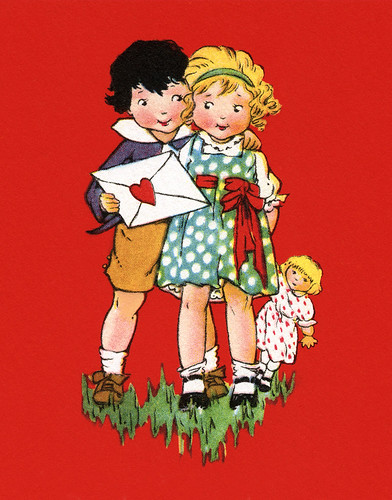
Image by IronRodArt - Royce Bair ("Star Shooter")
Since we are only about a week away from Valentine's Day, I thought I would share this recent restoration of a little boy giving a little girl a Valentine greeting - a circa 1915 vintage Valentine greeting card illustration. The image was scanned from my personal collection and the color restored (digitally remastered). I also retouched it to remove scratches, cracks, smudges and age spots. This is typically about a 3 hour process.
Here are four additional images I have restored as free Valentine eCards. Enjoy!
BTW, here's the text from this greeting card ...
A secret I'll tell you,
sweetheart of mine,
'Tis this, you're my
dearest and best
Valentine.
FREE for Personal Use Downloads: This image is offered through a Creative Commons license. You can also obtain PRINTS or a commercial use license (and even larger downloads) at my SmugMug site. NOTE: Personal use requires attribution to my stock agency (credit ''Stock Solution Photo Agency'') and a link to my Web site: ''The Stock Solution'' -- where you can also find many more free downloads.
Keywords: rlit1092; valentine; day; love; romance; tender; tenderness; nostalgia; nostalgic; clipart; clip; art; old; fashioned; oldpixels; pastoral; peace; peaceful; quaint; sentiment; sentimental; victorian; vintage; greeting; card; illustration; cute; sweet; children; child; kids; boy; girl; letter; friends; friendship; red; heart
VL20-006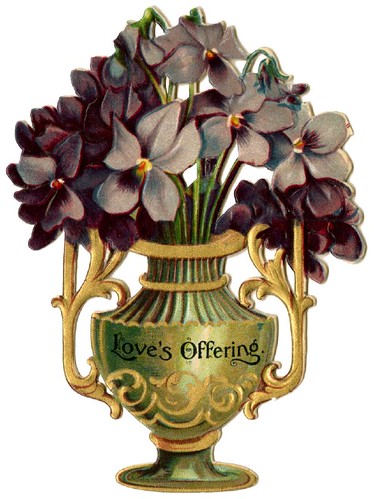
Image by Emma Paperclip
Dover Clip Art
for download if you like
Royalty Free
Some cool indian art images:
Different moods at the Indian Art Summit 2011, new Delhi
Image by vm2827
Some photos just about before the event and some while it was on . . .
Different moods at the Indian Art Summit 2011, new Delhi
Image by vm2827
Some photos just about before the event and some while it was on . . .
Different moods at the Indian Art Summit 2011, new Delhi
Image by vm2827
Some photos just about before the event and some while it was on . . .
Some cool clip art borders images:
Looking SE across quadrangle - Tomb of the Unknown Soldier - Arlington National Cemetery - 2012
Image by dctim1
Looking southeast across the grassy ellipsis (foreground) and the quadrangle (middle ground) east of the Tomb of the Unknown Soldier and the Memorial Amphitheater at Arlington National Cemetery near Washington, D.C., in the United States.
Arlington's first Amphitheater was constructed of wood in 1874, and soon proved far too small. Congress authorized construction of the Memorial Amphitheater on March 4, 1913. Ground-breaking occurred on March 1, 1915, and President Woodrow Wilson placed the cornerstone on October 15, 1915. It was dedicated on May 15, 1920.
Originally, the main entrance to Memorial Amphitheater had a rectangular granite plaza in front of it, from which some short marble steps led down to a slightly elliptical granite plaza surrounded by a marble balustrade. A retaining wall about 20 feet high formed the western end of the "Memorial Park" east of the Amphitheater. In front of the retaining wall, flagstone paths entered from the north and south (the curving paths led back up to the Amphitheater), joining to form a ellipsis with a grassy middle -- which you can see here. (The ellipsis is about 150 feet north-south and 50 feet east-west.) A rectangular grass lawn 50 feet wide extended about 200 feet eastward, ending in a series of short marble steps the led down to Roosevelt Drive. The lawn was bordered on either side with boxwood trees clipped into rectangular shapes.
Across Roosevelt Drive was another overlook. This shallow arc contained an Art Deco fountain made of polished bronze. It was anchored on either end with grey granite columns into which were carved by Art Deco eagles. A retaining wall dropped another 15 feet to Section 6 below the overlook.
The entire "Memorial Park" was designed to create a formal, Neoclassical space which provided a vista that allowed people standing on the overlooks to see the western end of the National Mall across the Potomac River, and to see the Lincoln Memorial (which began construction in 1914 and was finished in 1922, almost two years to the day after the Memorial Amphitheater was finished).
But this soon changed...
Memorial Amphitheater was altered forever the year after its dedication. In 1917, America entered World War I. More than 1.3 million Americans served in Europe during the war, and more than 116,516 died. Just 4,221 were unidentified or missing; the missing (3,173) were the vast majority of them. Nonetheless, 1,100 "unidentified" American war dead was a burden on the national conscience, and the media focused heavily on grieving mothers with no body to bury. Some American generals suggested in 1919 that a "Tomb of an Unknown Soldier" be created in the United States. The idea didn't gain traction at first, but in 1920 both England and France held huge public ceremonies honoring their unknown dead. These received much press attention in the United States, and on February 4, 1921, Congress enacted legislation establishing a similar memorial. Some proponents of the memorial originally proposed burying the unknown soldier in the crypt beneath the Capitol Rotunda -- a crypt originally planned for George Washington (but politely declined by his family). Worried that the Capitol might become a mausoleum, Congress instead chose Arlington National Cemetery as the site for the new memorial. On March 4, 1921, with just hours left in his presidency, President Woodrow Wilson signed the legislation into law.
In the United States, preparation for the "Tomb of the Unknown Solider" was frantically under way. The newly-formed American Legion (a congressionally-chartered veterans' lobby group) was pressing as late as May 1921 for the body to be buried in the Capitol Crypt. This debate was not resolved until mid-July, and by then very little time remained to create the monument. Where to build the Tomb of the Unknown Soldier at Arlington National Cemetery continued until October, when it was decided that the view from the Memorial Amphitheater's plaza was the most appropriate site.
The Tomb was cut unto the center of the short steps which led down to the granite overlook. Diggers buried downward until they reached the level of the lawn below. They then continued another 20 feet below the surface. The subsurface shaft was 16 feet from east to west and 9.5 feet from north to south, and filled with solid concrete. This formed the footings for the vault above. The footings had to be that deep and that large because tons of marble were going to be placed on top of them, and the memorial could not be permitted to sink or become destabilized. The vault itself was lined with marble. The vault's walls ranged in thickness from 7 feet at the bottom to 2 feet, 4 inches at the top. A plinth (or "sub-base") was set on top of the vault walls. The plinth serves as the base of the memorial proper, and also helps to conceal the rough, unfinished top of the vault walls. The plinth was made of three finished, rectangular pieces of marble which fitted over the vault walls like a collar. These are on the north, south, and west sides of the vault, and were the only part of the substructure visible in 1921. (They remain visible today; you can just see them in this image.) Four rectangular marble pieces form the actual base of the memorial. These were mortared to the top of the plinth. A rectangular marble capstone with curved sides was placed on top of the base. The capstone was pierced with the a hole to permit the coffin to be lowered into through the base, through the plinth, and to the bottom of the grave vault. The bottom of the vault was lined with 2 inches of French soil, taken from various battlefields in France.
The World War I unknown was interred as scheduled on November 11, 1921. More than 100,000 people attended the ceremonies, including the Premier of France, Aristide Briand; the former Premier of France, Rene Viviani (who led France through the war); Marshal Ferdinand Foch (who was Commander in Chief of Allied Forces in France); President Warren G. Harding, former President William Howard Taft, and former President Woodrow Wilson. One thousand "gold star mothers" (women who had lost a son in the war) attended the ceremony, as did every single living Medal of Honor winner. The entire United States Cabinet was there, and so was the entire United States Supreme Court. Every member of the House and Senate was present (although they had to stand in the colonnade). A large number of military personnel also attended the dedication. These included General John Pershing, who had led American forces in Europe; Lieutenant General Nelson Miles, former Commanding General of the Army; Admiral of the Fleet David Richard Beatty of the United Kingdom; General Armando Diaz, Marshal of Italy; General Baron Alphonse Jacques de Dixmude of Belgium; Frederick Lambart, 10th Earl of Cavan, commander of British forces in Italy; Arthur Balfour, former Prime Minster of the United Kingdom; and Tokugawa, Prince of Japan. Also conspicuous was Chief Plenty Coups of the Crow Nation, in full battle regalia and headdress.
President Harding bestowed on the unknown soldier the Medal of Honor and the Distinguished Service Cross (the latter was never awarded again). General Jacques presented the Croix de Guerre, Belgium's highest military honor. (He took from his own chest the medal, which had been bestowed on him by King Albert.) Admiral Beatty bestowed the Victoria Cross, which had never before been given to a foreigner. Marshal Foch bestowed the Medaille Militaire and the Croix de Guerre with palm, France's highest military honor. General Diaz gave the Gold Medal for Bravery, Prince Bibescu of Romania gave the Virtuta Militaire, Dr. Dedrich Stephenek of Czechoslovakia presented the Szechoslovakia War Cross, and Prince Lubomirski of Poland gave the Virtuti Militan. When the coffin was ready for lowering into the vault, Chief Plenty Coups removed his war bonnet and tenderly placed it and his coup-stick on the coffin. He raised his hands to the sky. "I place on this grave of this noble warrior this coup stick and this war bonnet," he said, "every eagle feather of which represents a deed of valor by my race. I hope that the Great Spirit will grant that these noble warriors have not given up their lives in vain and that there will be peace to all men hereafter." An artillery battery fired, and the coffin began to be lowered. An answering a battery of fire came from the ''USS Olympia'', an American destroyer lying at anchor in the Potomac River. "Taps" were played. Once the coffin lay on the floor of the vault, the centerpiece of the capstone was put in place and the tomb sealed.
But all that existed was the base. The actual cenotaph, which you see here, did not yet exist.
Congress authorized completion of the Tomb of the Unknown Soldier in July 1926. The Secretary of War held a design competition, with judges from Arlington National Cemetery, the American Battle Monuments Commission, and the Commission of Fine Arts. Only architects of national standing were permitted to enter the competition, and 74 submitted designs. Five were chosen as finalists, and required to submit plaster models of their proposals. Architect Lorimer Rich and sculptor Thomas Hudson Jones won the competition. Their design imitated a sarcophagus, but really was a solid block of marble. The design included a thin rectangular base to go on top of the existing capstone. Then there was the "die block" (the main monument), on top of which was a capstone. The die block featured Doric pilasters (fake columns) in low relief at the corners. On the east side (facing the Potomac River) was a sculpture in low relief of three figures, representing female Victory, Valor (male, to her left), and Peace (female). The north and south sides were divided into three sections by fluted Doric pilasters, with an inverted wreath on the upper portion of each section. On the west side (facing the amphitheater) was the inscription: "Here Rests In Honored Glory An American Soldier Known But To God." It is still not clear who came up with the phrase, but it had been used on crosses marking the graves of unknown soldiers in Europe as early as 1925. The judges asked that the approaches to the Tomb be improved as well. Clarence Renshaw designed the steps. The balustrade was removed, and the short series of steps extended outward and downward until they reached the lawn. A small landing exists two-thirds of the way down, after which the steps continue (wider than before). Congress approved funding for the memorial and new steps on February 29, 1929, and a contract to complete the Tomb was awarded on December 21, 1929. Quartermaster General Brig. Gen. Louis H. Bash oversaw the construction, which was done by Hegman and Harris.
The Vermont Marble Company provided the marble. This proved very problematic. The Yule Marble Quarry at Marble, Colorado, was chosen as the quarry. A year passed before suitable pieces of marble could be located at the quarry and mined. Three pieces had to be mined before a piece suitable for the 56-ton die block was found. Three pieces were mined and discarded before a fourth piece was found for the 18-ton base. But once the base arrived at Arlington, workers discovered an imperfection in the marble which caused it to be discarded. A fifth, sixth, and seventh piece of marble was then mined, but only the eighth piece was suitable and brought to the cemetery. Amazingly, a piece for the 14-ton capstone was found on the first try.
Work began on the Tomb of the Unknown Soldier in September 1931, but stopped for three months after a flaw in the base was found. Work resumed in December, and all three pieces were in place on December 31, 1931. Fabrication was completed on-site, with sculptor Jones working five days a week. The Tomb was completed and opened to the public on April 9, 1932. There was no dedication ceremony, and the memorial has never been officially named.
Unfortunately, the Tomb began to fall apart almost immediately. Chips and spalls (pieces broken off after heating and contracting) were found coming off the base in 1933. By 1963, a huge horizontal and secondary vertical crack had appeared in the die block -- probably caused by the release of pressure after the marble was mined. Acid rain and pollution have caused the marble sculptures to wear down appreciably, such that today they are only about half as sharp as they once were. Although there is no likelihood that the monument will collapse, debate continues to rage as to whether the monument should be replaced.
Beginning on July 2, 1937, the U.S. Army began permanently stationing an honor guard at the Tomb. The 3rd U.S. Infantry Regiment ("The Old Guard") formally took over these duties on April 6, 1948. It is guarded 24 hours a day, seven days a week, all year long. The guard is changed once every hour, on the hour. Out of respect for the dead, the guard carries his rifle on the outside shoulder -- away from the Tomb. The guard is not permitted to speak or break his march, unless someone enters the restricted area around the Tomb. If this happens, the guard must come to a halt and bring his rifle (loaded with live ammunition) to port-arms. This is usually enough to make the person move back. (No one has ever gone further than the sharp slap of the rifle in the guard's hands.)
In June 1946, Congress approved the burial of unknown American from World War II at the Tomb of the Unknown Soldier. Thirteen American unknowns were exhumed from cemeteries in Europe and Africa and shipped to Epinal, France. Maj. Gen. Edward J. O'Neill, U.S. Army, chose one of these caskets on May 12, 1958, as the "trans-Atlantic Candidate unknown." This casket was transported by air to Naples and placed aboard the USS Blandy. Two American unknowns were disinterred from the National Cemetery of the Pacific in Hawaii and four American unknowns disinterred from Fort McKinley American Cemetery in the Philippines. The six unknowns were taken by air to Hickam Air Force Base. On May 16, 1958, Col. Glen Eagleston, U.S. Air Force, selected a "trans-Pacific Candidate unknown," which was placed aboard the USS Canberra. The Blandy and Canberra rendezvoused off Virginia in May 1958, at which time the trans-Pacific Candidate unknown was transferred to the Canberra. Hospitalman First Class William R. Charette, the Navy's only active enlisted holder of the Medal of Honor, then placed a wreath at the foot of the casket on his right. (The other remains were buried at sea.) This individual became the World War II Unknown.
In August 1956, Congress approved the burial of a Korean War unknown at the Tomb. The remains of four unknown Americans from the Korean conflict were exhumed from the National Cemetery of the Pacific. On May 15, 1958, Master Sergeant Ned Lyle placed a wreath on the fourth casket to choose the Korean War Unknown. (The other three unknowns were reinterred in the National Cemetery of the Pacific.)
Because so much time had passed, the World War II and Korean War unknowns were chosen at the same time. The Unknown of Korea was transported aboard the Canberra at the same time as the "trans-Pacific Candidate unknown."
After the World War II Unknown was chosen, both the WWII and Korean War remains were taken back to the Blandy, which transported them to Washington, D.C. Like the World War I Unknown, they lay in state in the Rotunda of the United States Capitol. Both were interred in vaults on the west side of the Tomb of the Unknown Soldier on Memorial Day, May 30, 1958. Rather than enlarge the WWI vault, new vaults were dug in the plaza on the west side of the Tomb.
Congress authorized the entombment of a Vietnam War casualty in 1973. But with advances in identification of remains, no unknown remains could be found. Pressure from Vietnam veterans' groups was making the issue politically potent by the early 1980s, especially with Republican Ronald Reagan in office as president. And that's where the scandal began... In May 1972, 24-year-old U.S. Air Force pilot Michael Blassie was shot down in South Vietnam close to the Cambodia border. In October 1972, American ground patrols found Blassie's identity card, some American money, shreds of a USAF flight suit, and some skeletal remains near where Blassie went down. The I.D. card and money went missing soon thereafter. Pentagon officials declared the remains "likely to be" Blassie's, but no firm identification was ever made. By 1980, only four sets of Vietnam War-era remains could be declared unidentified, and one of these were the Blassie remains. In 1980, for unknown reasons, an Army review board ruled that the bones were not Blassie's. Soon thereafter, all documents in the file were removed and destroyed.
On May 8, 1984, the no-longer-"likely" remains were declared "unknown." The Vietnam Unknown was selected by Marine Corps Sgt. Maj. Allan Jay Kellogg, Jr. (a Medal of Honor recipient) at Pearl Harbor on May 17, 1984. The unknown's remains were transported by the USS Brewton to Alameda Naval Base in California. They arrived on May 23, 1984, and were transported by automobile to nearby Travis Air Force Base on May 24. The remains were transported by air to Andrews Air Force Base in Maryland on May 25, and lay in state in the Capitol Rotunda from May 25 to May 28. They were interred in a new vault in front of the Tomb on May 28, 1984. President Reagan presented the Medal of Honor to the unknown soldier.
The possibility that the remains were Blassie's was first raised by a man investigating missing-in-action cases. The story broke into the press in January 1998, and in April the two U.S. Senators from Missouri and Blassie's family were demanding answers. After a high-level Pentagon review, the Secretary of the Army recommended on April 26 that the remains be disinterred. The Secretary of Defense ordered exhumation on May 6, and the remains came above ground on May 13. A DNA sample was obtained from the remains on June 15, and on June 29 the remains were identified as Blassie's. Blassie was buried in his home town of St. Louis on July 10, 1998, with handfuls of soil from Arlington National Cemetery. The following month, Blassie's family asked to keep the Medal of Honor, but the Pentagon refused -- saying it was intended to go to the unknown, not to Blassie (who had not won it). In June 1999, with no further unidentified Vietnam War remains available, Pentagon officials said they would keep the vault empty. The Vietnam War crypt was rededicated on September 16, 1999.
Interestingly, the Tomb of the Unknown Soldier caused some major changes to D.C. as well as Arlington National Cemetery.
The final piece of "Arlington National Cemetery" as we know it today came with the construction of Arlington Memorial Bridge, Memorial Drive, and the Arlington Memorial Entrance in 1932. The bridge, the drive, and the entrance were designed as a single project and were dedicated on January 16, 1932 by President Herbert Hoover. The U.S. Commission on Fine Arts required that the bridge act as a symbolic link between North and South.
In fact, the famous McMillan Commission (which established the National Mall and set the locations of the Lincoln and Jefferson memorials) had proposed the bridge in 1901, but no action had been taken. When President Harding dedicated the Tomb of the Unknown Soldier in 1921, so many people swarmed over Highway Bridge (now the 14th Street Bridges) that it caused a three-hour traffic jam! Harding's own car had to abandon the roadway and take to the grass shoulder to get to the cemetery on time. Secretary of State Charles Evan Hughes had to walk across the bridge to make it.
Looking NE across quadrangle - Tomb of the Unknown Soldier - Arlington National Cemetery - 2012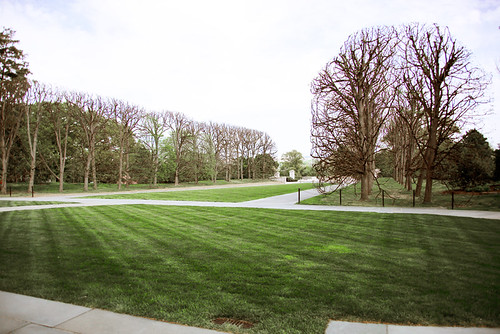
Image by dctim1
Looking northeast across the grassy ellipsis (foreground) and the quadrangle (middle ground) east of the Tomb of the Unknown Soldier and the Memorial Amphitheater at Arlington National Cemetery near Washington, D.C., in the United States.
Arlington's first Amphitheater was constructed of wood in 1874, and soon proved far too small. Congress authorized construction of the Memorial Amphitheater on March 4, 1913. Ground-breaking occurred on March 1, 1915, and President Woodrow Wilson placed the cornerstone on October 15, 1915. It was dedicated on May 15, 1920.
Originally, the main entrance to Memorial Amphitheater had a rectangular granite plaza in front of it, from which some short marble steps led down to a slightly elliptical granite plaza surrounded by a marble balustrade. A retaining wall about 20 feet high formed the western end of the "Memorial Park" east of the Amphitheater. In front of the retaining wall, flagstone paths entered from the north and south (the curving paths led back up to the Amphitheater), joining to form a ellipsis with a grassy middle -- which you can see here. (The ellipsis is about 150 feet north-south and 50 feet east-west.) A rectangular grass lawn 50 feet wide extended about 200 feet eastward, ending in a series of short marble steps the led down to Roosevelt Drive. The lawn was bordered on either side with boxwood trees clipped into rectangular shapes.
Across Roosevelt Drive was another overlook. This shallow arc contained an Art Deco fountain made of polished bronze. It was anchored on either end with grey granite columns into which were carved by Art Deco eagles. A retaining wall dropped another 15 feet to Section 6 below the overlook.
The entire "Memorial Park" was designed to create a formal, Neoclassical space which provided a vista that allowed people standing on the overlooks to see the western end of the National Mall across the Potomac River, and to see the Lincoln Memorial (which began construction in 1914 and was finished in 1922, almost two years to the day after the Memorial Amphitheater was finished).
But this soon changed...
Memorial Amphitheater was altered forever the year after its dedication. In 1917, America entered World War I. More than 1.3 million Americans served in Europe during the war, and more than 116,516 died. Just 4,221 were unidentified or missing; the missing (3,173) were the vast majority of them. Nonetheless, 1,100 "unidentified" American war dead was a burden on the national conscience, and the media focused heavily on grieving mothers with no body to bury. Some American generals suggested in 1919 that a "Tomb of an Unknown Soldier" be created in the United States. The idea didn't gain traction at first, but in 1920 both England and France held huge public ceremonies honoring their unknown dead. These received much press attention in the United States, and on February 4, 1921, Congress enacted legislation establishing a similar memorial. Some proponents of the memorial originally proposed burying the unknown soldier in the crypt beneath the Capitol Rotunda -- a crypt originally planned for George Washington (but politely declined by his family). Worried that the Capitol might become a mausoleum, Congress instead chose Arlington National Cemetery as the site for the new memorial. On March 4, 1921, with just hours left in his presidency, President Woodrow Wilson signed the legislation into law.
In the United States, preparation for the "Tomb of the Unknown Solider" was frantically under way. The newly-formed American Legion (a congressionally-chartered veterans' lobby group) was pressing as late as May 1921 for the body to be buried in the Capitol Crypt. This debate was not resolved until mid-July, and by then very little time remained to create the monument. Where to build the Tomb of the Unknown Soldier at Arlington National Cemetery continued until October, when it was decided that the view from the Memorial Amphitheater's plaza was the most appropriate site.
The Tomb was cut unto the center of the short steps which led down to the granite overlook. Diggers buried downward until they reached the level of the lawn below. They then continued another 20 feet below the surface. The subsurface shaft was 16 feet from east to west and 9.5 feet from north to south, and filled with solid concrete. This formed the footings for the vault above. The footings had to be that deep and that large because tons of marble were going to be placed on top of them, and the memorial could not be permitted to sink or become destabilized. The vault itself was lined with marble. The vault's walls ranged in thickness from 7 feet at the bottom to 2 feet, 4 inches at the top. A plinth (or "sub-base") was set on top of the vault walls. The plinth serves as the base of the memorial proper, and also helps to conceal the rough, unfinished top of the vault walls. The plinth was made of three finished, rectangular pieces of marble which fitted over the vault walls like a collar. These are on the north, south, and west sides of the vault, and were the only part of the substructure visible in 1921. (They remain visible today; you can just see them in this image.) Four rectangular marble pieces form the actual base of the memorial. These were mortared to the top of the plinth. A rectangular marble capstone with curved sides was placed on top of the base. The capstone was pierced with the a hole to permit the coffin to be lowered into through the base, through the plinth, and to the bottom of the grave vault. The bottom of the vault was lined with 2 inches of French soil, taken from various battlefields in France.
The World War I unknown was interred as scheduled on November 11, 1921. More than 100,000 people attended the ceremonies, including the Premier of France, Aristide Briand; the former Premier of France, Rene Viviani (who led France through the war); Marshal Ferdinand Foch (who was Commander in Chief of Allied Forces in France); President Warren G. Harding, former President William Howard Taft, and former President Woodrow Wilson. One thousand "gold star mothers" (women who had lost a son in the war) attended the ceremony, as did every single living Medal of Honor winner. The entire United States Cabinet was there, and so was the entire United States Supreme Court. Every member of the House and Senate was present (although they had to stand in the colonnade). A large number of military personnel also attended the dedication. These included General John Pershing, who had led American forces in Europe; Lieutenant General Nelson Miles, former Commanding General of the Army; Admiral of the Fleet David Richard Beatty of the United Kingdom; General Armando Diaz, Marshal of Italy; General Baron Alphonse Jacques de Dixmude of Belgium; Frederick Lambart, 10th Earl of Cavan, commander of British forces in Italy; Arthur Balfour, former Prime Minster of the United Kingdom; and Tokugawa, Prince of Japan. Also conspicuous was Chief Plenty Coups of the Crow Nation, in full battle regalia and headdress.
President Harding bestowed on the unknown soldier the Medal of Honor and the Distinguished Service Cross (the latter was never awarded again). General Jacques presented the Croix de Guerre, Belgium's highest military honor. (He took from his own chest the medal, which had been bestowed on him by King Albert.) Admiral Beatty bestowed the Victoria Cross, which had never before been given to a foreigner. Marshal Foch bestowed the Medaille Militaire and the Croix de Guerre with palm, France's highest military honor. General Diaz gave the Gold Medal for Bravery, Prince Bibescu of Romania gave the Virtuta Militaire, Dr. Dedrich Stephenek of Czechoslovakia presented the Szechoslovakia War Cross, and Prince Lubomirski of Poland gave the Virtuti Militan. When the coffin was ready for lowering into the vault, Chief Plenty Coups removed his war bonnet and tenderly placed it and his coup-stick on the coffin. He raised his hands to the sky. "I place on this grave of this noble warrior this coup stick and this war bonnet," he said, "every eagle feather of which represents a deed of valor by my race. I hope that the Great Spirit will grant that these noble warriors have not given up their lives in vain and that there will be peace to all men hereafter." An artillery battery fired, and the coffin began to be lowered. An answering a battery of fire came from the ''USS Olympia'', an American destroyer lying at anchor in the Potomac River. "Taps" were played. Once the coffin lay on the floor of the vault, the centerpiece of the capstone was put in place and the tomb sealed.
But all that existed was the base. The actual cenotaph, which you see here, did not yet exist.
Congress authorized completion of the Tomb of the Unknown Soldier in July 1926. The Secretary of War held a design competition, with judges from Arlington National Cemetery, the American Battle Monuments Commission, and the Commission of Fine Arts. Only architects of national standing were permitted to enter the competition, and 74 submitted designs. Five were chosen as finalists, and required to submit plaster models of their proposals. Architect Lorimer Rich and sculptor Thomas Hudson Jones won the competition. Their design imitated a sarcophagus, but really was a solid block of marble. The design included a thin rectangular base to go on top of the existing capstone. Then there was the "die block" (the main monument), on top of which was a capstone. The die block featured Doric pilasters (fake columns) in low relief at the corners. On the east side (facing the Potomac River) was a sculpture in low relief of three figures, representing female Victory, Valor (male, to her left), and Peace (female). The north and south sides were divided into three sections by fluted Doric pilasters, with an inverted wreath on the upper portion of each section. On the west side (facing the amphitheater) was the inscription: "Here Rests In Honored Glory An American Soldier Known But To God." It is still not clear who came up with the phrase, but it had been used on crosses marking the graves of unknown soldiers in Europe as early as 1925. The judges asked that the approaches to the Tomb be improved as well. Clarence Renshaw designed the steps. The balustrade was removed, and the short series of steps extended outward and downward until they reached the lawn. A small landing exists two-thirds of the way down, after which the steps continue (wider than before). Congress approved funding for the memorial and new steps on February 29, 1929, and a contract to complete the Tomb was awarded on December 21, 1929. Quartermaster General Brig. Gen. Louis H. Bash oversaw the construction, which was done by Hegman and Harris.
The Vermont Marble Company provided the marble. This proved very problematic. The Yule Marble Quarry at Marble, Colorado, was chosen as the quarry. A year passed before suitable pieces of marble could be located at the quarry and mined. Three pieces had to be mined before a piece suitable for the 56-ton die block was found. Three pieces were mined and discarded before a fourth piece was found for the 18-ton base. But once the base arrived at Arlington, workers discovered an imperfection in the marble which caused it to be discarded. A fifth, sixth, and seventh piece of marble was then mined, but only the eighth piece was suitable and brought to the cemetery. Amazingly, a piece for the 14-ton capstone was found on the first try.
Work began on the Tomb of the Unknown Soldier in September 1931, but stopped for three months after a flaw in the base was found. Work resumed in December, and all three pieces were in place on December 31, 1931. Fabrication was completed on-site, with sculptor Jones working five days a week. The Tomb was completed and opened to the public on April 9, 1932. There was no dedication ceremony, and the memorial has never been officially named.
Unfortunately, the Tomb began to fall apart almost immediately. Chips and spalls (pieces broken off after heating and contracting) were found coming off the base in 1933. By 1963, a huge horizontal and secondary vertical crack had appeared in the die block -- probably caused by the release of pressure after the marble was mined. Acid rain and pollution have caused the marble sculptures to wear down appreciably, such that today they are only about half as sharp as they once were. Although there is no likelihood that the monument will collapse, debate continues to rage as to whether the monument should be replaced.
Beginning on July 2, 1937, the U.S. Army began permanently stationing an honor guard at the Tomb. The 3rd U.S. Infantry Regiment ("The Old Guard") formally took over these duties on April 6, 1948. It is guarded 24 hours a day, seven days a week, all year long. The guard is changed once every hour, on the hour. Out of respect for the dead, the guard carries his rifle on the outside shoulder -- away from the Tomb. The guard is not permitted to speak or break his march, unless someone enters the restricted area around the Tomb. If this happens, the guard must come to a halt and bring his rifle (loaded with live ammunition) to port-arms. This is usually enough to make the person move back. (No one has ever gone further than the sharp slap of the rifle in the guard's hands.)
In June 1946, Congress approved the burial of unknown American from World War II at the Tomb of the Unknown Soldier. Thirteen American unknowns were exhumed from cemeteries in Europe and Africa and shipped to Epinal, France. Maj. Gen. Edward J. O'Neill, U.S. Army, chose one of these caskets on May 12, 1958, as the "trans-Atlantic Candidate unknown." This casket was transported by air to Naples and placed aboard the USS Blandy. Two American unknowns were disinterred from the National Cemetery of the Pacific in Hawaii and four American unknowns disinterred from Fort McKinley American Cemetery in the Philippines. The six unknowns were taken by air to Hickam Air Force Base. On May 16, 1958, Col. Glen Eagleston, U.S. Air Force, selected a "trans-Pacific Candidate unknown," which was placed aboard the USS Canberra. The Blandy and Canberra rendezvoused off Virginia in May 1958, at which time the trans-Pacific Candidate unknown was transferred to the Canberra. Hospitalman First Class William R. Charette, the Navy's only active enlisted holder of the Medal of Honor, then placed a wreath at the foot of the casket on his right. (The other remains were buried at sea.) This individual became the World War II Unknown.
In August 1956, Congress approved the burial of a Korean War unknown at the Tomb. The remains of four unknown Americans from the Korean conflict were exhumed from the National Cemetery of the Pacific. On May 15, 1958, Master Sergeant Ned Lyle placed a wreath on the fourth casket to choose the Korean War Unknown. (The other three unknowns were reinterred in the National Cemetery of the Pacific.)
Because so much time had passed, the World War II and Korean War unknowns were chosen at the same time. The Unknown of Korea was transported aboard the Canberra at the same time as the "trans-Pacific Candidate unknown."
After the World War II Unknown was chosen, both the WWII and Korean War remains were taken back to the Blandy, which transported them to Washington, D.C. Like the World War I Unknown, they lay in state in the Rotunda of the United States Capitol. Both were interred in vaults on the west side of the Tomb of the Unknown Soldier on Memorial Day, May 30, 1958. Rather than enlarge the WWI vault, new vaults were dug in the plaza on the west side of the Tomb.
Congress authorized the entombment of a Vietnam War casualty in 1973. But with advances in identification of remains, no unknown remains could be found. Pressure from Vietnam veterans' groups was making the issue politically potent by the early 1980s, especially with Republican Ronald Reagan in office as president. And that's where the scandal began... In May 1972, 24-year-old U.S. Air Force pilot Michael Blassie was shot down in South Vietnam close to the Cambodia border. In October 1972, American ground patrols found Blassie's identity card, some American money, shreds of a USAF flight suit, and some skeletal remains near where Blassie went down. The I.D. card and money went missing soon thereafter. Pentagon officials declared the remains "likely to be" Blassie's, but no firm identification was ever made. By 1980, only four sets of Vietnam War-era remains could be declared unidentified, and one of these were the Blassie remains. In 1980, for unknown reasons, an Army review board ruled that the bones were not Blassie's. Soon thereafter, all documents in the file were removed and destroyed.
On May 8, 1984, the no-longer-"likely" remains were declared "unknown." The Vietnam Unknown was selected by Marine Corps Sgt. Maj. Allan Jay Kellogg, Jr. (a Medal of Honor recipient) at Pearl Harbor on May 17, 1984. The unknown's remains were transported by the USS Brewton to Alameda Naval Base in California. They arrived on May 23, 1984, and were transported by automobile to nearby Travis Air Force Base on May 24. The remains were transported by air to Andrews Air Force Base in Maryland on May 25, and lay in state in the Capitol Rotunda from May 25 to May 28. They were interred in a new vault in front of the Tomb on May 28, 1984. President Reagan presented the Medal of Honor to the unknown soldier.
The possibility that the remains were Blassie's was first raised by a man investigating missing-in-action cases. The story broke into the press in January 1998, and in April the two U.S. Senators from Missouri and Blassie's family were demanding answers. After a high-level Pentagon review, the Secretary of the Army recommended on April 26 that the remains be disinterred. The Secretary of Defense ordered exhumation on May 6, and the remains came above ground on May 13. A DNA sample was obtained from the remains on June 15, and on June 29 the remains were identified as Blassie's. Blassie was buried in his home town of St. Louis on July 10, 1998, with handfuls of soil from Arlington National Cemetery. The following month, Blassie's family asked to keep the Medal of Honor, but the Pentagon refused -- saying it was intended to go to the unknown, not to Blassie (who had not won it). In June 1999, with no further unidentified Vietnam War remains available, Pentagon officials said they would keep the vault empty. The Vietnam War crypt was rededicated on September 16, 1999.
Interestingly, the Tomb of the Unknown Soldier caused some major changes to D.C. as well as Arlington National Cemetery.
The final piece of "Arlington National Cemetery" as we know it today came with the construction of Arlington Memorial Bridge, Memorial Drive, and the Arlington Memorial Entrance in 1932. The bridge, the drive, and the entrance were designed as a single project and were dedicated on January 16, 1932 by President Herbert Hoover. The U.S. Commission on Fine Arts required that the bridge act as a symbolic link between North and South.
In fact, the famous McMillan Commission (which established the National Mall and set the locations of the Lincoln and Jefferson memorials) had proposed the bridge in 1901, but no action had been taken. When President Harding dedicated the Tomb of the Unknown Soldier in 1921, so many people swarmed over Highway Bridge (now the 14th Street Bridges) that it caused a three-hour traffic jam! Harding's own car had to abandon the roadway and take to the grass shoulder to get to the cemetery on time. Secretary of State Charles Evan Hughes had to walk across the bridge to make it.
Eagle pylon detail - Quadrangle - Memorial Amphitheater - Arlington National Cemetery - 2012
Image by dctim1
Detail of one of the Art Deco eagles on the eastern overlook on the quadrangle east of the Tomb of the Unknown Soldier and the Memorial Amphitheater at Arlington National Cemetery near Washington, D.C., in the United States.
Arlington's first Amphitheater was constructed of wood in 1874, and soon proved far too small. Congress authorized construction of the Memorial Amphitheater on March 4, 1913. Ground-breaking occurred on March 1, 1915, and President Woodrow Wilson placed the cornerstone on October 15, 1915. It was dedicated on May 15, 1920.
Originally, the main entrance to Memorial Amphitheater had a rectangular granite plaza in front of it, from which some short marble steps led down to a slightly elliptical granite plaza surrounded by a marble balustrade. A retaining wall about 20 feet high formed the western end of the "Memorial Park" east of the Amphitheater. In front of the retaining wall, flagstone paths entered from the north and south (the curving paths led back up to the Amphitheater), joining to form a ellipsis with a grassy middle -- which you can see here. (The ellipsis is about 150 feet north-south and 50 feet east-west.) A rectangular grass lawn 50 feet wide extended about 200 feet eastward, ending in a series of short marble steps the led down to Roosevelt Drive. The lawn was bordered on either side with boxwood trees clipped into rectangular shapes.
Across Roosevelt Drive was another overlook. This shallow arc contained an Art Deco fountain made of polished bronze. It was anchored on either end with grey granite columns into which were carved by Art Deco eagles. A retaining wall dropped another 15 feet to Section 6 below the overlook.
The entire "Memorial Park" was designed to create a formal, Neoclassical space which provided a vista that allowed people standing on the overlooks to see the western end of the National Mall across the Potomac River, and to see the Lincoln Memorial (which began construction in 1914 and was finished in 1922, almost two years to the day after the Memorial Amphitheater was finished).
Some cool clip art pictures images:
Altered Rolodex Card -- France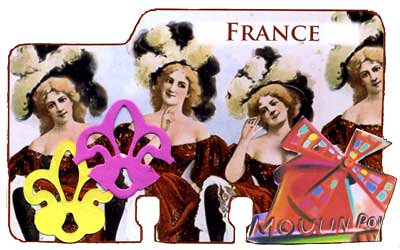
Image by campbelj45ca
This altered art Rolodex card has France as the theme. The card is covered with an image of can can dancers. Two fleur-de-lis die cuts are covered with glitter, although it does not show in the picture. The small Moulin Rouge image at the bottom right is computer generated clip art.
chuckmatrix clip in second life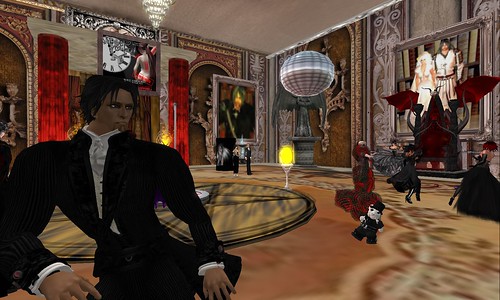
Image by rafeejewell
–––
Posted also here – Have a look at my Koinup gallery
Other cool Second Life Pictures on Koinup
chuckmatrix clip : the a list
Image by rafeejewell
–––
Posted also here – Have a look at my Koinup gallery
Other cool Second Life Pictures on Koinup
A few nice tattoo art images I found:
Pupa Tattoo Art Gallery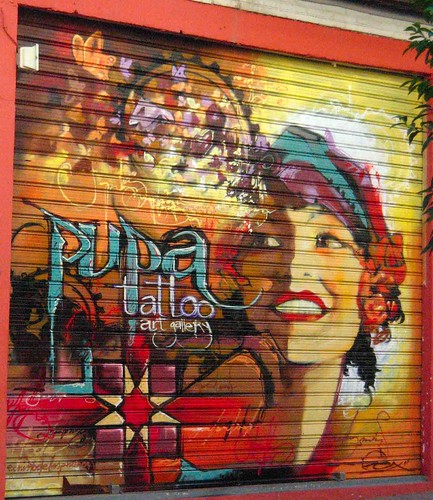
Image by zokete
by Sex: El niño de las pinturas
pupatattooartgallery.blogspot.com
International Tattoo Art Magazine - Terry Ribera - Published!
Image by Deannster
Blogged here.
Baltimore Tattoo Arts Convention 2008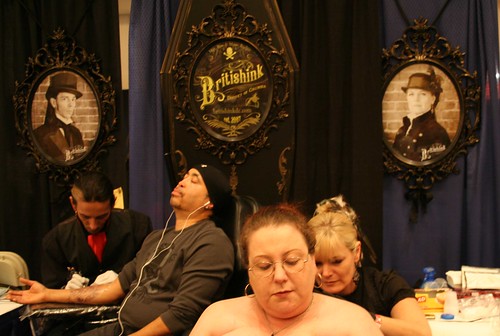
Image by elh70
Cynthia Rudiz. Britishink. I took another great shot of her but unfortunately I did not have the flash on and it came out blurry. Cyn is a flickr contact of Sidereal and does some amazing work.
www.britishinkdc.com/
chesapink.com/home.html